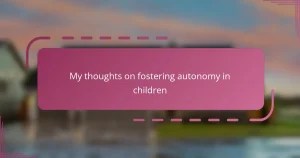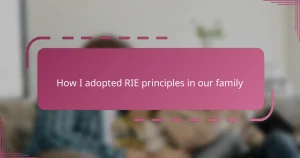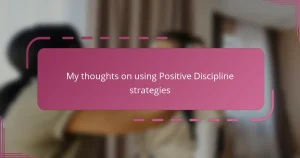Key takeaways
- Mindfulness in parenting involves being present and aware of both a child’s needs and the parent’s emotions, leading to calmer interactions.
- Practicing mindfulness can reduce stress for parents and enhance emotional intelligence in children through modeling kind and calm behaviors.
- Simple techniques, such as focusing on breath and sensory details, can help parents cultivate mindfulness in everyday activities and create deeper connections.
- Embracing small, consistent mindfulness rituals can transform ordinary moments into meaningful experiences, fostering a peaceful home environment.
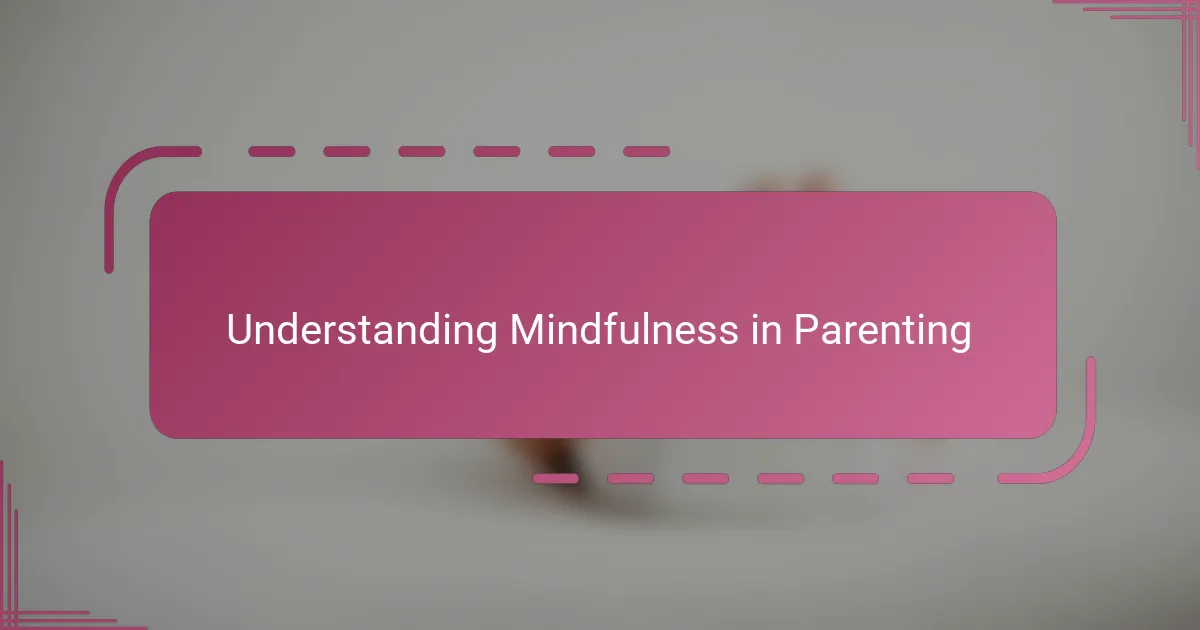
Understanding Mindfulness in Parenting
For me, understanding mindfulness in parenting began with realizing how often I was on autopilot, reacting rather than responding to my child’s needs. Have you ever caught yourself snapping and then immediately regretting it? That moment of awareness is what mindfulness invites us to cultivate.
Mindfulness means being fully present, noticing not just what our children say or do, but also tuning into our own emotions and thoughts without judgment. I remember a time when instead of getting frustrated at my toddler’s tantrum, I paused and asked myself what was really driving my reaction. That small shift helped me respond with calmness rather than anger.
Isn’t it amazing how slowing down can change the entire dynamic between parent and child? Mindfulness helps me appreciate these everyday moments more deeply, turning what used to feel chaotic into opportunities for connection and growth.
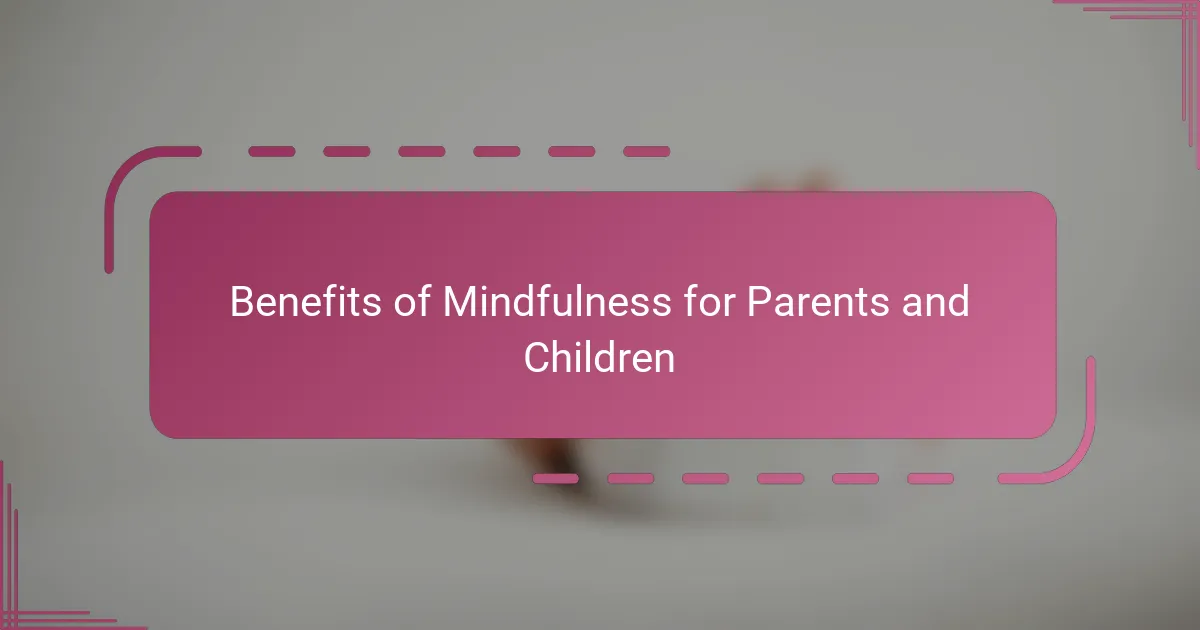
Benefits of Mindfulness for Parents and Children
What struck me most about practicing mindfulness as a parent is how it softened the tension in challenging moments. Instead of feeling overwhelmed or reactive, I found myself more patient and open, which naturally made my child feel safer and more understood. Have you noticed how a calm presence can soothe a stormy tantrum better than words ever could?
Mindfulness also opened my eyes to the small joys I might have otherwise missed—the shy smiles, the curious questions, or even the quiet moments of togetherness. I realized that being present doesn’t just benefit my child; it nourishes my own well-being, reducing stress and bringing more joy into our daily routine. Isn’t that the kind of balance every parent craves?
Over time, I saw my child becoming more aware of their feelings and learning to express them in healthier ways. It felt like we were growing emotional intelligence side by side. Have you ever wondered how much kids pick up from our own habits? Mindfulness gave me the chance to model kindness and calm, which is perhaps the greatest benefit of all.
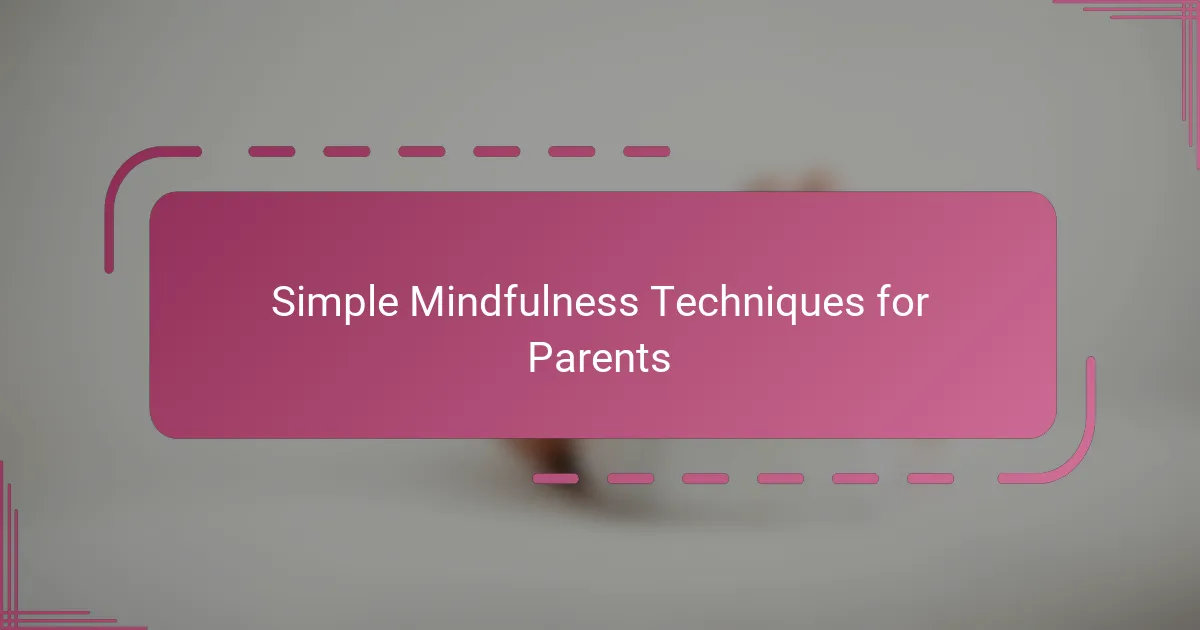
Simple Mindfulness Techniques for Parents
One simple technique that really helped me was just focusing on my breath for a few seconds before responding to my child. Have you ever tried pausing like that? It gave me space to check in with myself and choose a calmer way to react, especially during stressful moments.
Another practice I found effective was tuning into little sensory details while playing or doing chores together—like noticing the texture of my child’s hair or the sound of their laughter. It might seem small, but these moments helped me feel connected and grounded, even when the day felt overwhelming.
Sometimes, I’d set a gentle reminder to pause and scan how I was feeling throughout the day. What emotions were rising? Being aware of these signals helped me catch frustration before it took over. Have you noticed how this awareness can shift the energy in your home? For me, it made all the difference in creating a more peaceful environment.
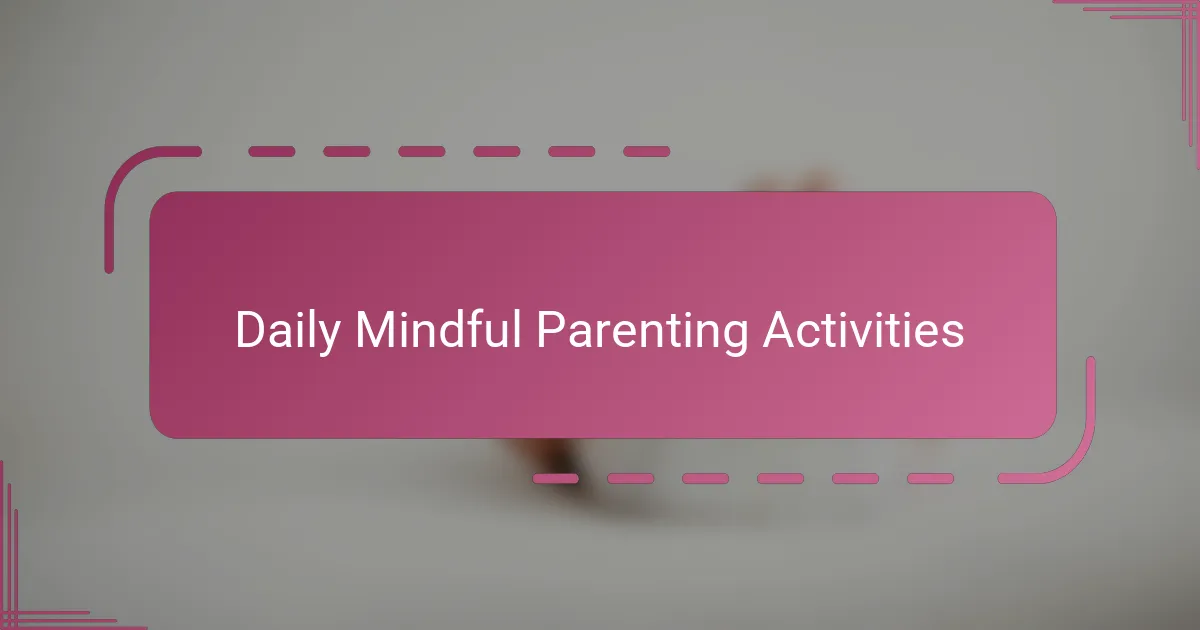
Daily Mindful Parenting Activities
In my daily routine, I make it a point to start each morning with a mindful moment alongside my child—whether it’s feeling the warmth of the sun together or simply noticing our breath before the day begins. Have you ever paused with your little one just to truly be present? That simple act sets a tone of calm that carries through even the busiest days.
During mealtime, I try to put away distractions and really focus on the experience—the colors of the food, the sounds of chewing, the stories shared around the table. It’s incredible how shifting attention to these small details can turn a rushed meal into a valuable moment of connection and presence. When was the last time you fully savored a meal with your child?
At bedtime, I’ve found that a few minutes of mindful breathing or gentle stretching with my child not only helps them settle down but also gives me a chance to release any built-up tension from the day. This ritual feels like a quiet gift to both of us, reminding me how mindfulness isn’t just a tool but a shared experience that nurtures our bond. How do you wind down with your child at the end of the day?
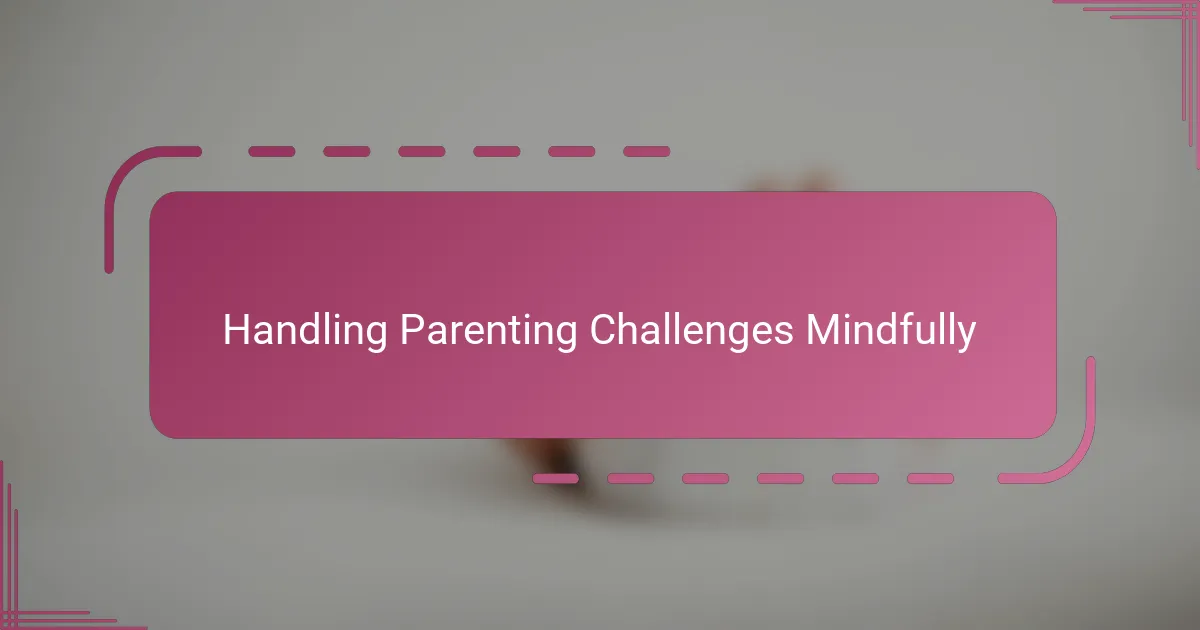
Handling Parenting Challenges Mindfully
When my child was overwhelmed with emotions, I used to jump in with solutions or discipline right away. But practicing mindful handling of these moments, I started to pause and acknowledge both my child’s feelings and my own rising tension. Have you ever tried simply sitting with your child’s discomfort instead of fixing it? That space created a surprising sense of safety and understanding for both of us.
I remember one tough afternoon when a minor disagreement felt like it was spiraling out of control. Instead of reacting impulsively, I took a slow, deep breath and asked myself what was really going on beneath the surface—for me and for my child. This mindful approach shifted the whole interaction from conflict to connection. Doesn’t it feel empowering to choose calmness even when everything inside urges you to react?
Of course, mindfulness doesn’t mean perfection or instant peace every time. There are still moments where frustration sneaks in, but now I catch it quicker and invite compassion rather than judgment. How often do you find that just noticing your own emotions changes the tone of a challenging parenting moment? For me, that simple awareness has been a game-changer in managing stress and responding with kindness.
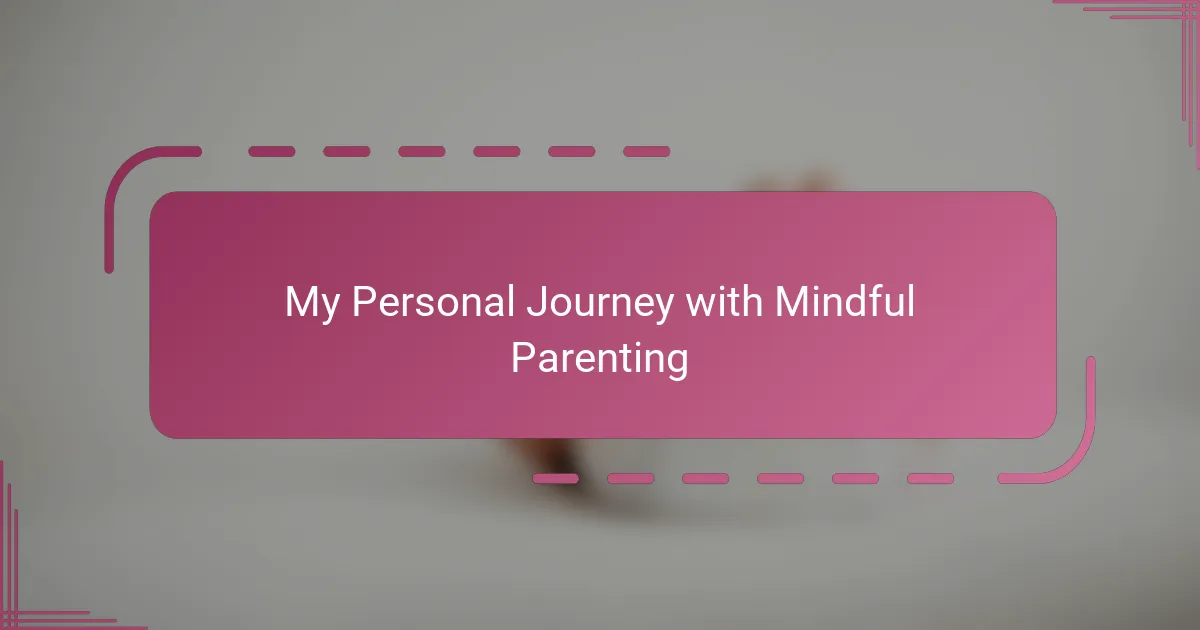
My Personal Journey with Mindful Parenting
There was a time when I felt completely overwhelmed by the chaos of parenting, unsure how to break the cycle of stress and impatience. Mindfulness entered my life almost unexpectedly, and slowly, I began to notice how pausing and breathing before reacting created a gentle space between my child’s behavior and my response. That small space made all the difference—it felt like reclaiming kindness in moments that used to feel impossible.
I often reflect on one particular afternoon when my toddler’s meltdown felt endless. Instead of yelling or rushing through it, I sat down beside them, simply breathing together in silence. It was awkward at first, but that shared calm shifted the energy, and I realized we were both learning—a profound give-and-take of patience and presence that parenting books rarely capture.
Have you ever wondered what it truly means to be fully present with your child? For me, mindful parenting has become less about perfect techniques and more about embracing the messy, beautiful reality of connection—the tender moments, the mistakes, and the ongoing journey of growth that we navigate hand in hand.
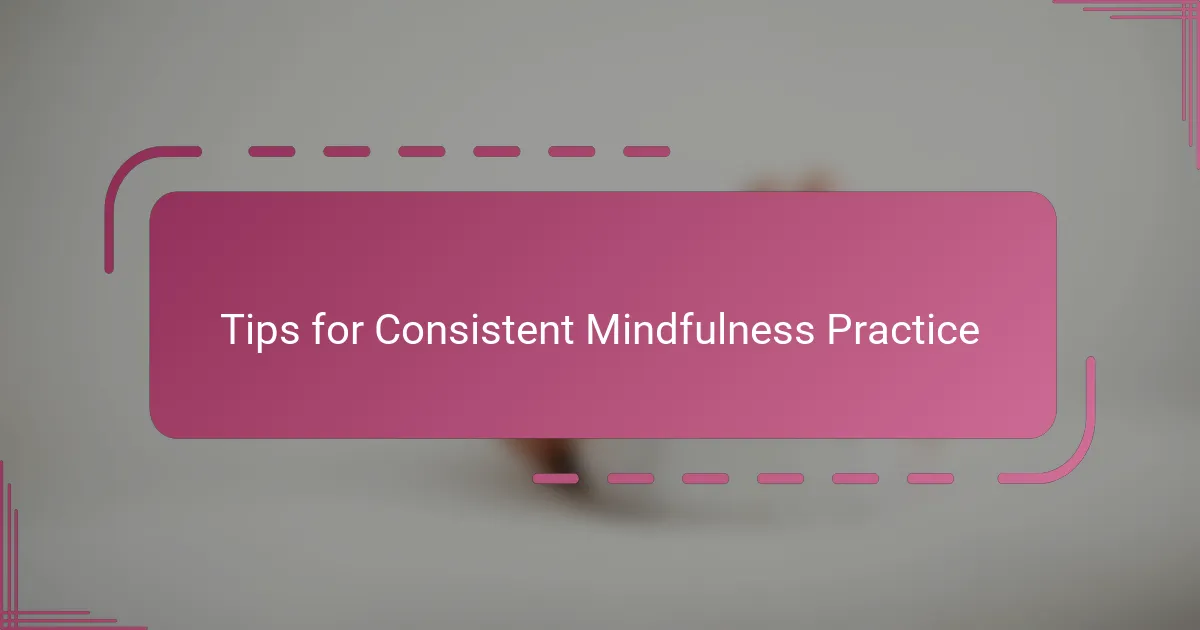
Tips for Consistent Mindfulness Practice
Keeping mindfulness consistent felt daunting at first, but I found that setting small daily reminders helped me stay grounded. For example, a silent note on my phone would nudge me to pause and take a deep breath before diving into the next task. Have you ever tried something as simple as a mental check-in to keep yourself present throughout the day?
Another tip that worked for me was creating gentle rituals around routine moments, like saying a mindful good morning or noticing sensations during bedtime stories. These little anchors became natural touchpoints to reconnect, even on stressful days. Isn’t it surprising how ordinary moments can become powerful mindfulness opportunities when we intentionally pause?
Most importantly, I learned to treat consistency with kindness rather than perfection. Some days, mindfulness came easily; others, it slipped away without notice. Instead of feeling discouraged, I embraced those moments as part of the learning curve. How often do you give yourself grace when a new habit feels challenging? For me, compassion helped sustain mindfulness long-term without pressure or guilt.
